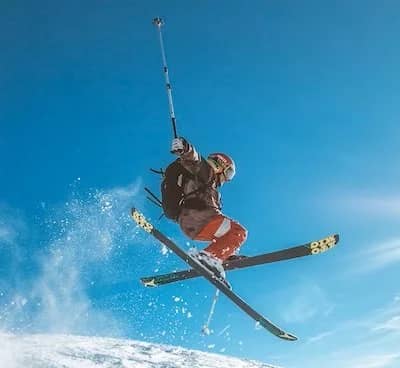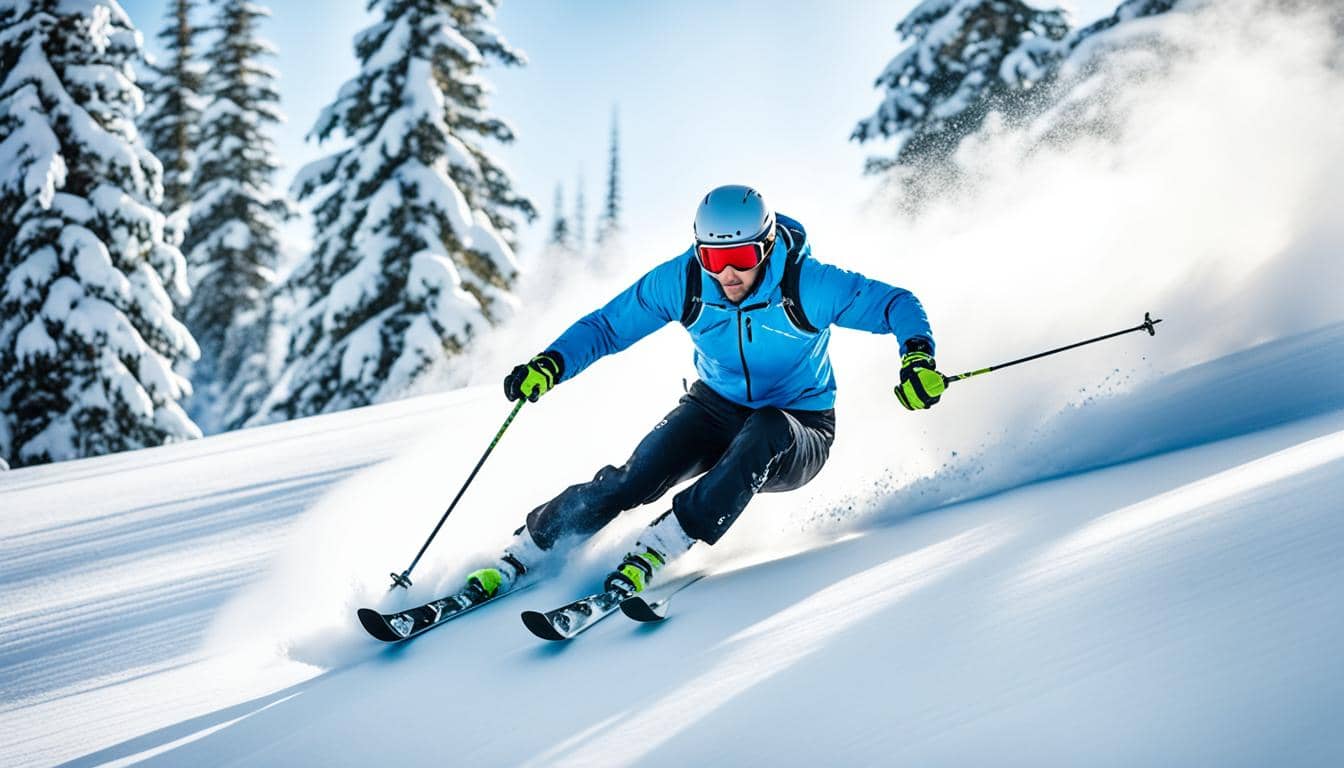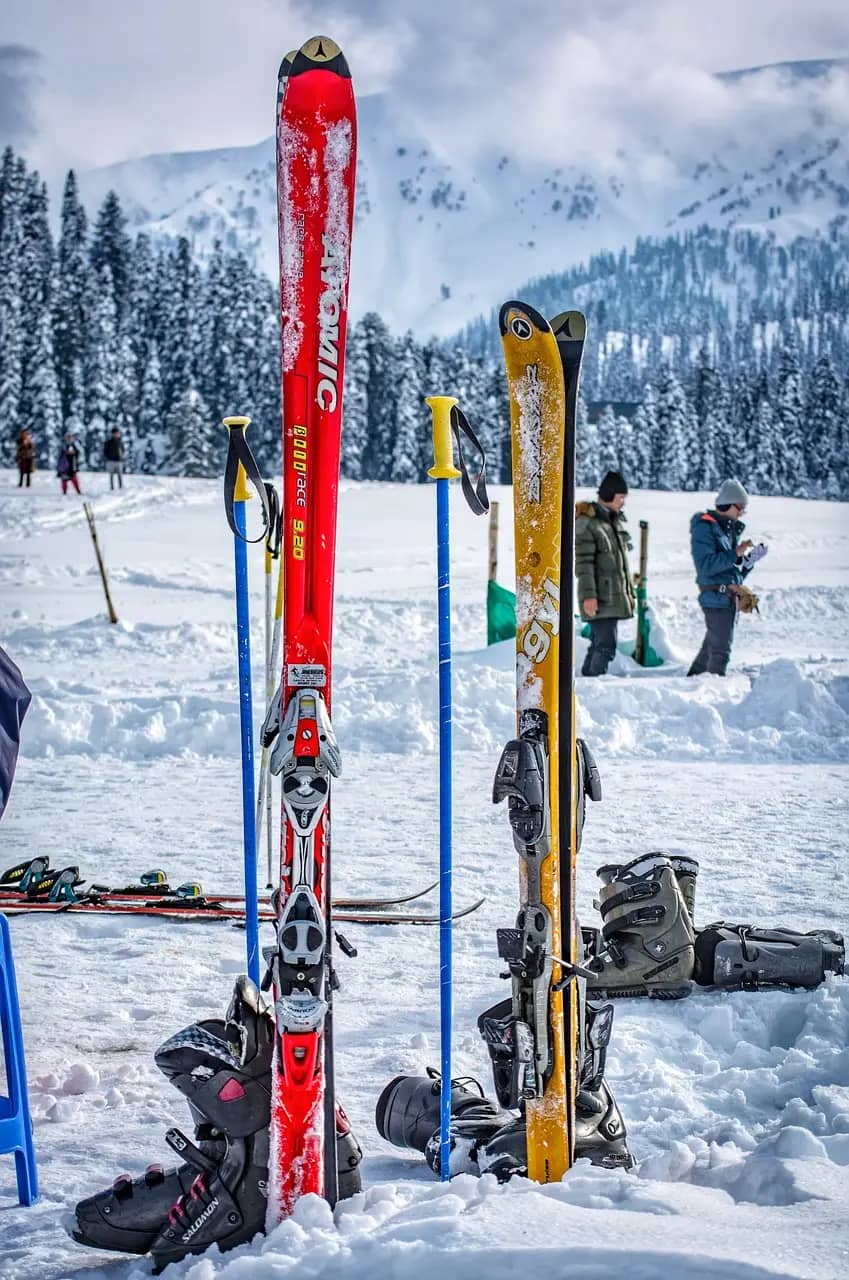Introduction to Ski Sharpening
Imagine gliding down a snowy slope with effortless precision, your skis carving through the powder like a hot knife through butter. This isn’t just a dream—it’s the reality of well-maintained, sharply honed skis. In this introduction, we’ll delve into why sharpening your skis isn’t just a maintenance task, but a critical component to your skiing performance and safety.
Table of Contents
Why is Sharpening Skis Necessary?
Have you ever wondered why seasoned skiers swear by the ritual of ski sharpening? It’s simple: sharp edges equal control. Whether you’re navigating a tricky mogul field or slicing through a steep groomer, your ski’s edges are your lifeline. They provide the grip needed to make precise turns and maintain stability. Without them, you’re at the mercy of the mountain. So, let’s gear up and explore the art of ski sharpening—your passport to a superior skiing experience.
Understanding the Basics of How to Sharpen Skis
Embarking on the journey of sharpening your skis is akin to fine-tuning a musical instrument; it’s an art that enhances performance and harmonizes with the snowy slopes. But where do you begin? Let’s slice into the essentials, ensuring your skis are as ready for the mountain as you are.
Tools required for Ski Sharpening
Before diving into the nitty-gritty, let’s talk tools. You wouldn’t go to battle without your armor, right? Similarly, you need the right ski sharpening tools to conquer those edges. Gather a diamond stone for smoothing out nicks, a file for setting the edge angle, a guide to maintain consistency, and a clamp to keep your skis in place. Remember, quality tools not only make the job easier but also ensure a sharper, more reliable edge.
Now, you might be wondering, “Do I really need all these tools?” Picture this: you’re on the mountain, and your skis are as responsive as a sleepy sloth. Not ideal. Proper tools mean precision, and precision means performance. It’s that simple.
With your toolkit ready, you’re one step closer to carving up the slopes with the finesse of a maestro. But hold your horses – there’s a method to this madness, and we’re about to dive deep into it.

The Ski Sharpening Process
The process of sharpening skis is like sculpting a masterpiece from marble – it requires patience, attention to detail, and a steady hand. Start by securing your skis in the clamp with the base facing away from you. This ensures stability as you work your magic.
Using the file and guide, gently run along the edge in smooth, consistent strokes. Think of it as caressing the cold steel, not wrestling it. You’re aiming for an angle that’s sharp yet forgiving, typically between 88 to 90 degrees. This is where the guide shines, maintaining that angle with the precision of a Swiss watch.
Next, the diamond stone makes its grand entrance. It’s the polish to your edge’s shine, the final touch that makes all the difference. Glide it along the edge to remove any burrs and to refine the sharpness. The result? Edges that could slice through the iciest conditions, giving you control that’s as sharp as your skis.
Throughout this process, maintain a conversational tone with your skis. Yes, you heard that right. Talk to them, understand them, and they’ll reveal the secrets to their optimal edge. It’s a dance, a push and pull that, when done right, leads to the perfect harmony between skier and ski.
And there you have it, folks – the basics of how to sharpen skis. It’s a skill that pays dividends on the slopes, turning good runs into great ones. So, grab your tools, take a deep breath, and let’s make those edges sing.
Detailed Step-by-Step Guide on How to Sharpen Skis
Embarking on the journey of ski sharpening can transform your slope experience from mundane to exhilarating. Let’s dive into the nitty-gritty of how to sharpen skis and elevate your performance to its peak!
Preparing Your Skis for Sharpening
Before we unleash the potential of your skis, proper preparation is key. Start by cleaning the ski edges with a cloth to remove any rust or debris—think of it as prepping a canvas before painting a masterpiece. Secure your skis in a vise, base facing up, ensuring they won’t budge as you work your magic.
How to Use Ski Sharpening Tools
Now, let’s talk tools. You’ll need a diamond stone, a file guide, and a file. Begin with the diamond stone, gliding it along the edges to smooth out any nicks. Imagine you’re a sculptor, chiseling away imperfections to reveal the true form beneath.
Next, set your file guide to the desired angle—typically between 88 to 90 degrees. With the file in the guide, use firm, consistent strokes, working from tip to tail. It’s a rhythmic dance, each stroke bringing you closer to perfection.
Remember, patience is a virtue here. Rushing can lead to mistakes, and we want your skis to slice through snow like a hot knife through butter.
To visualize your progress, here’s a simple table to track your edge angles:
| Ski Type | Edge Angle |
|---|---|
| Racing Skis | 87° – 88° |
| All-Mountain Skis | 88° – 89° |
| Powder Skis | 89° – 90° |
Common Mistakes to Avoid When Sharpening Skis
Embarking on the ski sharpening journey? Fantastic! But before you dive in, let’s navigate the slippery slopes of common blunders. Sharpening your skis is no small feat, and avoiding these pitfalls is essential for maintaining your gear in peak condition. So, let’s cut to the chase and ensure your efforts aren’t in vain!

Overlooking the Ski’s Base Condition
First things first, always inspect the base of your skis. A smooth base is the bedrock of effective sharpening. Ignoring scrapes or gouges? That’s like building a house on shaky ground – it simply won’t hold up. Remember, a pristine base complements sharp edges, so give it the TLC it deserves.
Choosing the Wrong Angle
Angles aren’t just for mathematicians; they’re crucial for ski aficionados too! Picking the wrong angle can turn your skis into unruly beasts on the slopes. The secret? Stick to the manufacturer’s recommended bevel. This isn’t the time for guesswork; precision is key. A degree off here or there, and you might as well be skiing on noodles!
Applying Excessive Pressure
When it comes to pressure, think of Goldilocks – not too hard, not too soft, just right. Exerting too much force can overheat the edges, leading to a loss of temper (of the metal, not just yours). So, keep a steady hand and let the tools do the heavy lifting.
Ignoring the Detuning Step
Detuning – it’s not about taking the edge off your day, but rather the tips and tails of your skis. This step is often skipped, but it’s as crucial as the finale in a symphony. It smooths out any over-sharpened areas, ensuring your skis don’t catch unexpectedly on the snow. Consider it the polish on your performance.
Forgetting to Finish with a Fine Stone
Last but not least, the finishing touch. A fine stone refines the edge to razor-sharp perfection. Skipping this? You’re leaving your skis half-dressed for the ball. It’s the difference between good and great, between a slip and a glide. So, don’t cut corners – finish with finesse.
Maintaining Sharpened Skis
Once you’ve honed your skis to perfection, preserving their sharpness is key to sustaining their performance. But how do you keep that razor edge from dulling? Let’s dive into some proven strategies to maintain the bite in your skis.
Proper Storage Techniques
Did you know that how and where you store your skis can impact their sharpness? Moisture and rust are the archenemies of a well-sharpened edge. Always dry your skis thoroughly after use, and store them in a cool, dry place. Consider using a ski strap to keep the bases apart, preventing them from rubbing against each other. This simple step can significantly extend the life of your ski’s sharpness.
Avoiding Abrasive Conditions
It’s no secret that certain terrains are tougher on your skis. Icy patches and rocky slopes can quickly dull your edges. Whenever possible, steer clear of these abrasive conditions. If you can’t avoid them, be prepared to give your skis some extra TLC afterward.
Regular Quick Tune-ups
Think of your skis like a high-performance sports car—they require regular tune-ups. A quick edge touch-up after every few outings can make a world of difference. It’s a bit like brushing your teeth regularly to prevent cavities; consistent maintenance is far more effective than waiting for problems to arise.
Using the Right Products
Invest in quality ski wax and use it frequently. This not only keeps your skis gliding smoothly but also protects the edges from corrosion. Remember, the right products don’t have to break the bank; they just have to be suited for your skis and the conditions you frequently encounter.
Professional Inspections
Even with meticulous care, it’s wise to have a professional inspect your skis seasonally. They can spot issues that you might miss and can perform any necessary adjustments. This step ensures that your skis remain in top-notch condition, ready to tackle the slopes with ease.

5 Hidden Alpine Treasures: Most Enchanting Ski Resorts in Europe
Unveil the charm of Europe’s lesser-known ski resorts in our guide to hidden Alpine paradises. From serene slopes to[…]

5 Key Balance Exercises for Superior Ski Performance
Discover 5 crucial balance exercises for skiing to improve stability and performance on the slopes. Enhance your skiing experience

Alpine vs Nordic Skiing: Choose Your Slope Style
Explore the thrill and grace of the slopes as we delve into alpine vs nordic skiing – find out[…]
Frequently Asked Questions (FAQs)
How often should I sharpen my skis?
The frequency of sharpening your skis really depends on how often you hit the slopes and the conditions you ski in. As a rule of thumb, if you ski regularly, you’ll want to sharpen your edges every few days of skiing to maintain optimal performance. For less frequent skiers, a good sharpening at the beginning of the season might be enough. But always remember to check your edges periodically for dullness or damage—especially after skiing on icy conditions or accidentally hitting rocks.
Can I sharpen my skis at home?
Definitely! With the right tools and a bit of patience, you can sharpen your skis at home. It’s a valuable skill to learn and can save you trips to the ski shop. Start with a basic kit: a file, a file guide, and a diamond stone. There are plenty of tutorials available online to guide you through the process. Just take it slow at first, and practice on an older pair of skis if you can. Remember, it’s about maintaining a consistent angle and applying even pressure along the edge.
What are the signs of dull skis?
Signs of dull skis are usually felt on the slopes before they’re seen. If you’re finding it harder to turn or your skis are slipping out from under you when you’re on hard-packed snow or ice, those are telltale signs. Visually, you might notice that the edges look shiny and feel smooth when you run your fingers along them (carefully, of course!). If you spot any burrs or nicks, it’s time to sharpen those edges to get back that grip and precision on the snow.
What tools do I need to sharpen my skis?
To properly sharpen your skis, you’ll need a few key tools. A file for removing the bulk of the dull metal, a file guide to keep the angle consistent, and a diamond stone for fine-tuning and polishing the edge. A vice to hold your skis steady is also very helpful. Some skiers like to use a gummi stone as a finishing touch to remove any micro-burrs. Don’t forget a good brush to clean the ski base before and after sharpening, and a rubber band to keep your ski brakes out of the way!
How to maintain the sharpness of my skis?
Maintaining the sharpness of your skis is all about regular care. After every ski day, take a moment to wipe down your skis and check the edges for damage. If you notice minor dullness, a few passes with a diamond stone can help maintain the edge between full sharpening sessions. Avoid skiing over rocks and always store your skis in a dry place to prevent rust. And don’t forget, a well-waxed base can also help protect your edges from wear and tear!
Conclusion
As we glide to the end of our ski sharpening journey, it’s clear that the finesse of your skis’ edges is not merely a detail but a cornerstone of your winter sports experience. Sharp skis are your ticket to a smoother ride, precise turns, and ultimately, a safer and more exhilarating day on the slopes. Remember, the edge you have on your skis can truly give you an edge on the slopes!
Throughout this guide, we’ve carved through the how-tos and the not-to-dos, ensuring you’re well-equipped to tackle those edges with confidence. Whether you’re a seasoned pro or a snow-capped novice, mastering the art of ski maintenance is an investment that pays dividends in performance and safety.
Let’s not forget, ski sharpening isn’t a one-time affair. It’s a ritual, a rhythmic tune-up that your skis yearn for, depending on your frequency of use and the conditions they brave. By now, you should have a keen sense of when your skis are singing the blues of bluntness and how to restore their symphony of sharpness.
In an era where DIY is the battle cry of many a thrifty and adventurous soul, you stand poised with knowledge and tools to ensure your skis are always slope-ready. So, before you next embrace the mountain’s call, give your skis the attention they deserve, and they’ll surely return the favor.





No responses yet